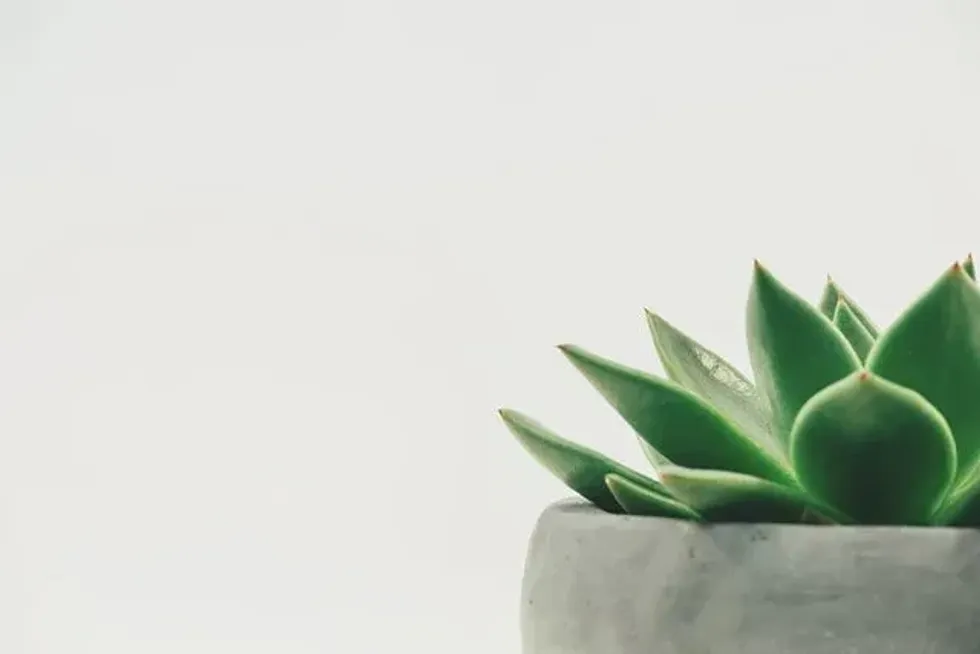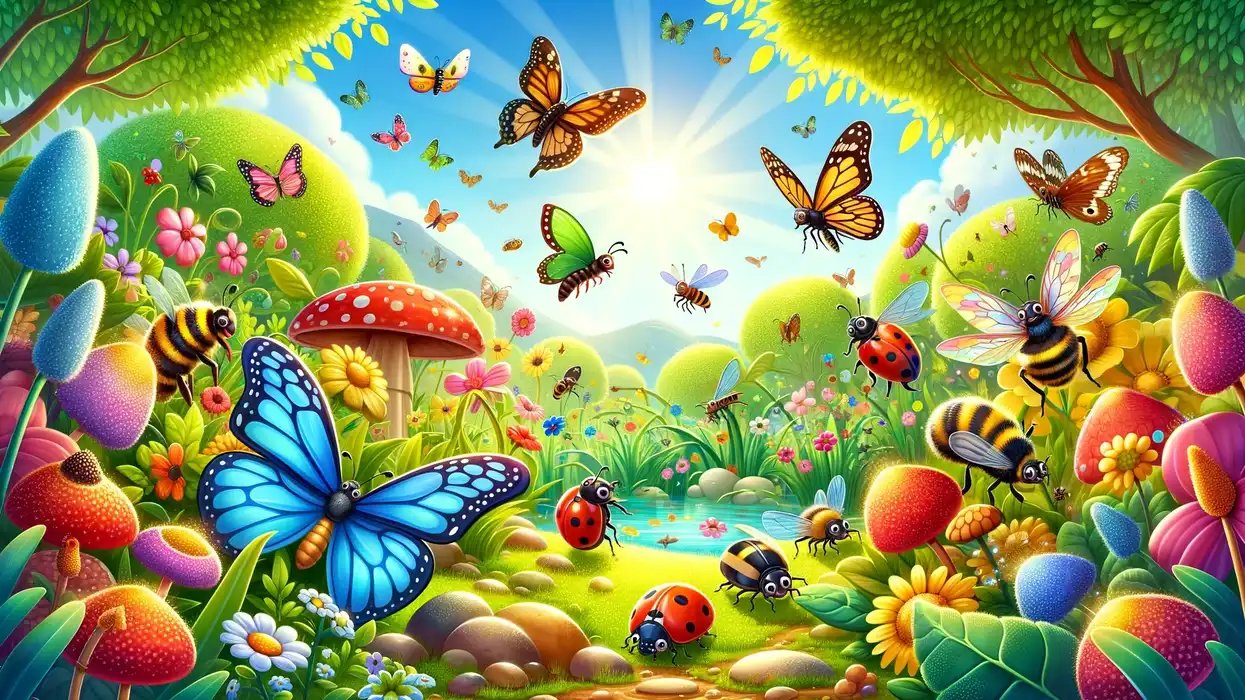Animal vs. Plant Cell Diagram: Things You Need To Know

Robert Hooke viewed and found the cell under a microscope for the first time in 1665.
The word 'cell' is coined from the Latin term 'cell,' which means 'little room'. The cell membrane protects all biological activity from the outside environment and encloses the cell's contents.
Organelles are tiny structural elements that perform various specific actions to keep the cell alive and functioning. Both animal and plant cells develop specialized elements to execute specific jobs over time.
However, there are significant distinctions and similarities between plant and animal cells. The following are substantial structural variations between a typical plant cell and a typical animal cell.
Animals cells lack a cell wall, whereas a plant cell does have a wall. The polysaccharide of higher plant cells is typically cellulose. The cell wall of a plant cell provides and maintains the cell's form, as well as acts as a protective shield.
The fluid in the plant cell vacuole accumulates and presses against the cell wall. The freshness of fresh veggies is due to this turgor pressure.
Plant Cell Vs. Animal Cell Venn Diagram
Plant and animal cells are characterized as eukaryotic cells, which means they have a true nucleus. The DNA of eukaryotic cells is encased in a membrane-bound nucleus, unlike that of prokaryotic cells like bacteria or archaea.
The cell membrane, a flexible sheet of lipid bilayers, is comparable to these membranes. Eukaryotes have several membrane-bound organelles as well. Organelles are internal formations that perform various tasks, including protein synthesis and energy production.
Plant cells lack flagella and cilia, two biological features that allow animal cells to move about. Flagella-containing animal cells, such as sperm cells, are an outstanding example. Flagella in the sperm cell helps it travel and approach the egg. Cilia, on either hand, resemble short hairs that move back and forth over the cell's exterior.
Animal Vs. Plant Cell Organelles Venn Diagram
Plant and animal cells both include organelles. Animal and plant cells, like organs in the body, include a variety of components called cell organelles which execute various roles to keep cells alive.
In any eukaryotic cell, the nucleus is the most visible organelle. It is surrounded by a double membrane and interacts with the adjacent cytosol through a network of nuclear pores.
Nuclear chromatin, which carries the organism's genome, is found within each nucleus. The nucleolus is the most conspicuous component in the nucleus. Ribosomes are produced in the nucleolus and migrate out of the nucleus to the rough endoplasmic reticulum, wherein they play an essential role in protein synthesis.
Ribosomes are RNA and protein packets that serve an essential function in eukaryotic and bacterial cells. A ribosome comprises two parts: a big and a tiny subunit.
The ribosome transports messenger RNA from the cell nucleus to the transfer RNA, adding specific amino acid units to the growing protein chain. Amino acids are converted into proteins by ribosomes. The cytoskeleton aids in the maintenance of cell shape.
However, the cytoskeleton is most important in cell movement. The cytoskeleton is required for internal activity, cell motility, and muscle fiber contraction of the cell organelles.
The cytosol is the 'soup' that contains every one of the cell organelles and is where most cellular metabolism occurs. The cytosol, and organelles suspended inside the cytosol, are called cytoplasm.
Microtubules are formed in the centrosome, part of the cell. Plant and animal cell centrosomes contain microtubule collections and perform similar functions in cell division. However, the plant cell centrosome is finer and lacks centrioles.
As a result, the two centrosomes travel to opposite sides of the nucleus. As a result, microtubules sprout from every centrosome to form a 'spindle' that separates duplicated chromosomes into two identical daughter cells.
Every centriole in animal cells comprises nine clusters with fused microtubules. The two centrioles in a complete animal cell centrosome are positioned perpendicularly. The Golgi apparatus is a single-membraned membrane-bound structure.
It's a collection of membrane-bound vesicles to help package macromolecules for transit somewhere else in the cell. Hydrolytic enzymes are found in lysosomes and are required for intracellular digestion.
Polysaccharides, nucleic acids, proteins, lipids, or even worn-out organelles are broken down by digestive enzymes in the lysosomes. An animal cell has a lot of them, whereas plant cells do not contain lysosomes at all. Plant cells hydrolytic enzymes are more commonly located in the vacuole.
Peroxisomes are oxidative enzyme packets that are membrane-bound. Peroxisomes serve various functions in plant cells, including turning fatty acids into sugar and aiding chloroplasts with photorespiration. In addition, peroxisomes safeguard animal cells from their own hazardous hydrogen peroxide generation. White blood cells, for example, create hydrogen peroxide to fight bacteria.
Cell secretions such as hormones and neurotransmitters are bundled in secretory vesicles at the Golgi apparatus. After that, the secretory vesicles get carried to the cell surface to be released.
Mitochondria supply the energy that allows a cell to move, reproduce, create secretory products, and contract; in other words, they are the cell's powerhouse. Mitochondria are membrane-bound organelles with a double membrane, similar to the nucleus. The surface of the outer membrane is relatively smooth.
However, if viewed in cross-section, the inner membrane appears heavily convoluted, generating folds (cristae). Vacuoles are membrane-bound sacs that aid metabolism and discharge waste materials.
Polysaccharides create a rigid, protective cell wall in a plant cell. All upper plant cells contain chloroplasts, which are specialized organelles.
Chlorophyll, which gives plants their green color and allows them to receive energy from sunlight, is found in these organelles. The biological photosynthesis process uses this energy to transform water and carbon dioxide in the atmosphere into metabolizable carbohydrates. The outer membrane of chloroplasts is made up of two layers.
The smooth endoplasmic reticulum (ER) is a huge system of membrane-bound vesicles with tubules found in the eukaryotic cell, particularly those critical for the synthesis of hormones as well as other secretory products. The endoplasmic reticulum is an extension of an outer nuclear membrane, and its many roles reflect the eukaryotic cell's diversity.
The smooth endoplasmic reticulum has a variety of functions based on the cell type, like lipid as well as steroid hormone synthesis, lipid-soluble toxin degradation in liver cells, and calcium release control during muscle cell contraction.
Bacterial vs. Animal Cell vs. Plant Cell Venn Diagram
Bacteria are single-celled organisms with prokaryotic cells that are unicellular without a nucleus and membrane-bound organelles. On the other hand, plants and animals are composed of eukaryotic cells containing a nucleus and membrane-bound organelles such as a Golgi apparatus or mitochondria.
The cells of eukaryotes are incredibly well-structured. These cells are often larger than bacterium cells, and they've evolved specific packaging and movement methods to accommodate their larger size. So, for example, the head and tail of mammalian sperm cells can be separated.
The onion skin covering epidermal cells protects delicate plant tissues from viruses and fungus. This layer of the epidermis is translucent and simple to remove, making it an excellent topic for studying the structure of plant cells. Only the cell walls in onion cells may be seen without stains.

Five Differences Between Plant And Animal Cells
Plant and animal cells differ in various ways. Animal cells, for instance, lack a cell wall and chloroplasts, whereas plant cells contain both. As a result, animal cells are generally spherical and irregular. In contrast, several plant cells get a rectangular fixed form owing to the cell wall.
In a nutshell, the most noticeable distinction between animal and plant cells would be that plant cells feature unique organelles such as plasmodesmata, chloroplasts, and plastids for storage, as well as a large central vacuole. In addition, most plant cells lack centrioles or centrosomes and lysosomes, which are seen in animal cells.
In addition, plant cells lack cilia and flagella, which are present in some animal cells.
A plant cell is larger than an animal cell (10-30 um), with the cell size varying from 10um-100 um in size. Animal cells are known to come in various shapes and sizes, ranging from irregular to circular, and are determined mainly by the role they execute. Plant cells are structured similarly, with the majority being cube-shaped or rectangular.
Animal cells do not have a cell wall, but a plasma (cell) membrane maintains and shields the cell from wear and tear. It also plays an essential function in selective permeability, allowing nutrition molecules, liquid, and other cell constituents to flow in and out.
Plant cells contain both a cell membrane and a cellulose-based cell wall. A stiff membrane matrix is present on the exterior of all plant cells. The cell wall's principal purpose is to prevent the cell and its contents from being damaged.
The plasma membrane of animal cells is a flexible, thin membrane that serves as a protective coating for the animal cell. It possesses high permeability as well.
A cellulose plasma membrane immediately below the rigid cell wall enables regulated permeability of cell components out and into the cell cytoplasm in plant cells. Identifying the cell wall is a simple way to distinguish plant cells when viewed under a microscope.
The presence of chloroplasts is another way in which the two cells differ. Plants are autotrophs, meaning they can manufacture their own food, and employ cell organelles termed chloroplasts to produce energy from the sun through the photosynthesis process.
Carbon dioxide, light energy, and water create oxygen and glucose in photosynthesis. On the other hand, animals (heterotrophs) must obtain organic components or nourishment from other creatures. This is the most significant distinction between a plant and an animal cell.
Cellular respiration occurs in the mitochondria of animal cells, which are physically similar to chloroplasts and have the same role in producing energy. Plant cells, on the other hand, have mitochondria.
Chloroplasts, like mitochondria, possess outer and inner membranes. Within the area encompassed by the chloroplast's inner membrane are a series of interlinked and layered fluid-filled membrane sacs known as thylakoids.
Only a few lower plant species contain centrioles in their cells. Still, all animal cells possess centrioles. For example, the male gametes in charophytes, seedless vascular plants, bryophytes, ginkgo, and cycads.
Plant cells contain a single large central vacuole that could take up to 90% of the cell volume, while animal cells get one or even more small vacuoles. Animal cells have vacuoles that hold ions, water, and waste.
The role of vacuoles in a plant cell is to retain moisture and keep the cell turgid. Turgor pressure decreases when there isn't enough water and this causes the plant to shrivel. The plant cell typically has a single large vacuole that acts as a holding tank for nutrition, waste products, water, and other components.
In contrast, animal cells could have numerous small vacuoles. In-plant cells, cytoplasmic streaming distributes chloroplasts all around central vacuoles.
Lysosomes are well-defined in animal cells. Secretion, cell signaling, plasma membrane repair, and energy metabolism are involved. The occurrence of lysosomes within plant cells is a topic of discussion. Animal lysosomes have been found in plant vacuoles in a few investigations, implying that plant vacuoles can perform the part of the animal lysosomal network.
Plasmodesmata are small channels that run through the cell walls in plant and algae cells, allowing them to communicate and carry information. The animal cell doesn't contain plasmodesmata, but has other communication mechanisms, such as gap junctions and tunneling nanotubes (TNTs).
Both plant and animal cells are critical since they are responsible for the survival of plants and animals.
We Want Your Photos!
More for You
See All
Bachelor of Arts specializing in English Language, Master of Philosophy

Devangana RathoreBachelor of Arts specializing in English Language, Master of Philosophy
Devangana is a highly accomplished content writer and a deep thinker with a Master's degree in Philosophy from Trinity College, Dublin. With a wealth of experience in copywriting, she has worked with The Career Coach in Dublin and is constantly looking to enhance her skills through online courses from some of the world's leading universities. Devangana has a strong background in computer science and is also an accomplished editor and social media manager. Her leadership skills were honed during her time as the literacy society president and student president at the University of Delhi.
Bachelor of Arts specializing in English

Shruti ThapaBachelor of Arts specializing in English
With a passion for American, British, and children's literature, Shruti is currently pursuing a Bachelor's degree at Garden City University, Bengaluru. Her fluency in Nepali, Hindi, and Mandarin demonstrates her linguistic abilities and global perspective. In addition to her literary pursuits, she has a keen interest in non-fiction literature, aesthetics, early childhood education, and Egyptian history. Shruti's research paper 'Bringing Art Illustrations In Education And Pop Culture' showcases her proficiency in these areas and her dedication to academic excellence.
Disclaimer
1) Kidadl is independent and to make our service free to you the reader we are supported by advertising. We hope you love our recommendations for products and services! What we suggest is selected independently by the Kidadl team. If you purchase using the Buy Now button we may earn a small commission. This does not influence our choices. Prices are correct and items are available at the time the article was published but we cannot guarantee that on the time of reading. Please note that Kidadl is a participant in the Amazon Services LLC Associates Program, an affiliate advertising program designed to provide a means for sites to earn advertising fees by advertising and linking to Amazon. We also link to other websites, but are not responsible for their content.
2) At Kidadl, we strive to recommend the very best activities and events. We will always aim to give you accurate information at the date of publication - however, information does change, so it’s important you do your own research, double-check and make the decision that is right for your family. We recognise that not all activities and ideas are appropriate for all children and families or in all circumstances. Our recommended activities are based on age but these are a guide. We recommend that these ideas are used as inspiration, that ideas are undertaken with appropriate adult supervision, and that each adult uses their own discretion and knowledge of their children to consider the safety and suitability. Kidadl cannot accept liability for the execution of these ideas, and parental supervision is advised at all times, as safety is paramount. Anyone using the information provided by Kidadl does so at their own risk and we can not accept liability if things go wrong.
3) Because we are an educational resource, we have quotes and facts about a range of historical and modern figures. We do not endorse the actions of or rhetoric of all the people included in these collections, but we think they are important for growing minds to learn about under the guidance of parents or guardians.







